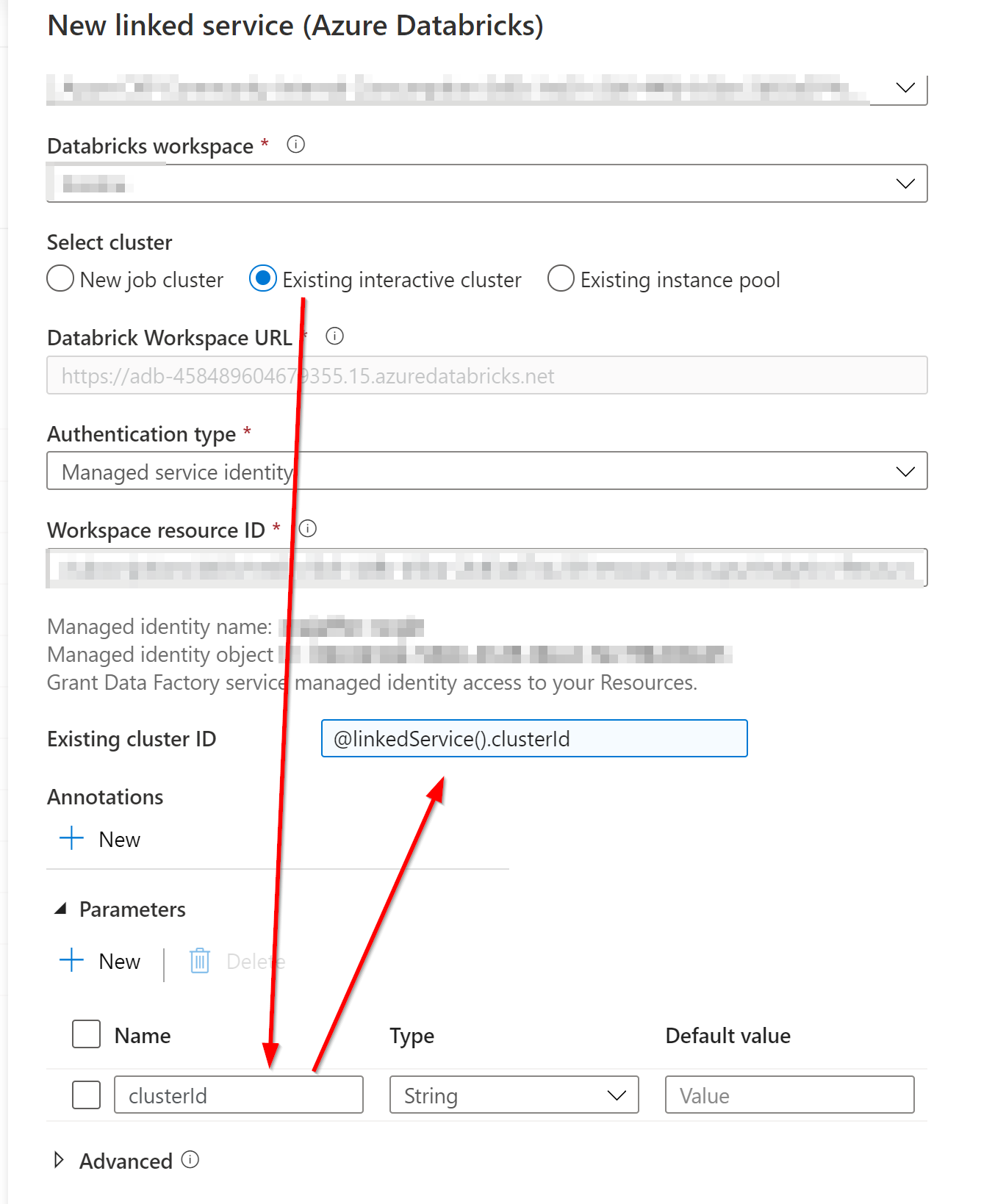Oh, I see. I was confused before, because the New Cluster option, makes a new cluster every pipeline activity run. Or so I thought, I didn't explicitly look into that.
I have been able to parameterize most of the highlighted. The Python version seems to be an oddball.
{
"name": "AzureDatabricks1",
"type": "Microsoft.DataFactory/factories/linkedservices",
"properties": {
"parameters": {
"version": {
"type": "string"
},
"nodeType": {
"type": "string"
},
"driverType": {
"type": "string"
}
},
"annotations": [],
"type": "AzureDatabricks",
"typeProperties": {
"domain": "https://XXXX.azuredatabricks.net",
"newClusterNodeType": "@linkedService().nodeType",
"newClusterNumOfWorker": "1",
"newClusterSparkEnvVars": {
"PYSPARK_PYTHON": "/databricks/python3/bin/python3"
},
"newClusterVersion": "@linkedService().version",
"newClusterInitScripts": [],
"newClusterDriverNodeType": "@linkedService().driverType",
"encryptedCredential": XXXX
}
}
}
Note the Python version is under "newClusterSparkEnvVars" when choosing 3 (above). When choosing 2 (below) it is not present. Also below note the number of workers when I set the autoscaling min 2 max 4. This means the dynamic content for scaling should be a string literal of form min:max
{
"name": "AzureDatabricks1",
"type": "Microsoft.DataFactory/factories/linkedservices",
"properties": {
"parameters": {
"version": {
"type": "string"
},
"nodeType": {
"type": "string"
},
"driverType": {
"type": "string"
},
},
"annotations": [],
"type": "AzureDatabricks",
"typeProperties": {
"domain": "https://XXXX.azuredatabricks.net",
"newClusterNodeType": "@linkedService().nodeType",
"newClusterNumOfWorker": "2:4",
"newClusterVersion": "@linkedService().version",
"newClusterInitScripts": [],
"newClusterDriverNodeType": "@linkedService().driverType",
"encryptedCredential": XXXX
}
}
}

